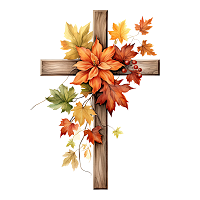 Lots of people love mashed potatoes. You might be stuck on your mom’s traditional recipe. But make no mistake, there are many different potato mashes to be had. First, just forget the idea of taking potato sponge out of a box, adding water and bringing this weird reconstituted potato powder to life in a pot on your stove.
Lots of people love mashed potatoes. You might be stuck on your mom’s traditional recipe. But make no mistake, there are many different potato mashes to be had. First, just forget the idea of taking potato sponge out of a box, adding water and bringing this weird reconstituted potato powder to life in a pot on your stove.
Potatoes aren’t expensive, and fresh ones from the store or your local Farm market will make a nice mashed potato side for your next fall or winter meal. Best potatoes to make mashed potatoes are Yukon Gold but any old standard potatoes will do.
Russet potatoes work. Plain old Eastern potatoes do the job also. One type of potato that doesn’t really hold up as well as the red skinned potato. You can try it, but the consistency is a bit wrong. You might have better success baking this potato instead of boiling it.
Either way, no matter what type of potato you choose, it’s always fun to experiment in your kitchen. Don’t be afraid to try new things. If you don’t like how your mashed potatoes come out, try a different potato next time.
The simplest way to make mashed potatoes is to cut them in chunks, place them in a large pot on the stove, cover with water and bring to a boil. Then turn down the heat and simmer until the potatoes are fork tender, about 15 minutes, maybe less.
Next, comes the mashing part. Lots of people have a special tool for this called a potato masher. If you don’t have one, you can just beat up your potatoes with a big wooden spoon using swift whipping motions and smashing them around.
If you like your mashed potatoes fluffy and creamy, you can whip out your hand mixer after adding a few other ingredients.
To Peel or Not to Peel?
Mashed potato purists might want theirs smooth and completely free of lumps. In that case, your mashed potatoes should be peeled before cooking.
It said though that most of the nutrition in potatoes comes from the skin and that means minerals especially. Anything that is grown in the ground has an abundance of minerals if it’s been cultivated in good soil. So consider leaving the skins on if you don’t mind a little extra crunch here and there.
What can you use to make your potatoes creamy and delicious?
Definitely butter. Anywhere from a quarter of a cup to half a cup could be good if you’re going with a quart pot filled with potatoes. Other ingredients you can experiment include sour cream, shredded cheddar or other favorite cheese, parmesan, half and half or heavy cream, or even good old milk.
Don’t be afraid, just take out a nice big spoon and scoop some into the potatoes, mix them up and sprinkle in some salt and pepper.
Taste test as you go. If your potatoes are too lumpy, you can take out your beater and smooth them to a desired consistency. Try not to slip on the salt, it’s better to let each person salt their potatoes to their liking. Once you salt, you can’t unsalt, unless you have extra unmatched potatoes that are already cooked lying around.
Other ways to yum up your mashed potatoes:
- Drop in a clove of garlic while they’re still cooking. Smash that right in and it will give some great garlic flavor.
- Sprinkle in fresh chopped chives.
- Stir in cooked, crispy bacon bits. It’s best to fry these up in your own kitchen rather than using some kind of fake bacon bits found at the store.
- Add some onion soup mix.
- Sauté finely chopped onion bits and stir in those.
- Shake in some garlic powder, onion powder, or other favorite seasonings like a little paprika for color.
- You can add herbs to your mashed potatoes. Blend up some fresh parsley, or shake in some dried rosemary for example.
You can even get fancy. Snip off the tip of the corner of a Ziploc bag. Spoon the potatoes into the bag. It’s like a homemade pastry tube. Use the bag to squeeze mashed potatoes onto each person’s dish for a fancy presentation.
Reheating cold mashed potatoes in the oven? Bring them back to life with a splash of milk. Sprinkle with cheddar or your favorite cheese. Bake until the cheese melts.


